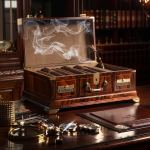Victorian houses are an indispensable part of our cultural heritage. They are replete with ornate detailing, high ceilings, and large windows that are the hallmark of architectural aesthetics of bygone eras. However, these historic buildings are often energy inefficient, posing a challenge to meeting modern sustainability goals. This article aims to discuss the best practices one can adopt to retrofit Victorian houses into energy-efficient homes without compromising their historical integrity.
Identifying Energy Inefficiencies in Victorian Houses
Victorian houses, while charming and historic, often fall short when it comes to energy efficiency. These buildings weren’t designed with modern heating and insulation in mind, and as such, they can be a significant source of energy waste.
Also to read : How to Choose the Right Property Management Software for UK Real Estate?
The first step in transforming these homes into energy-efficient buildings is to understand where they are losing energy. Poorly insulated walls, outdated heating systems, and single-pane windows are common culprits. Victorian houses often have high ceilings, which can lead to heat loss, and their large, ornate windows, while beautiful, can be a significant source of cold air infiltration.
To identify these issues, you may want to consider conducting an energy audit. This will involve a professional inspecting the house to identify areas where energy efficiency can be improved.
Also read : How to Evaluate and Mitigate Subsidence Risk in UK Residential Properties?
Retrofitting for Energy Efficiency
Once the areas of energy loss have been identified, the next step is to take corrective action. Retrofitting Victorian houses for energy efficiency is a delicate process that needs to balance the preservation of the building’s historic character with the need for energy conservation.
Insulating Old Walls
Insulating the walls of Victorian homes can be a challenging task due to the ornate plasterwork. However, it is a crucial step in reducing heat loss. The most effective solution is to use a breathable insulation material that will allow moisture to escape, preventing damp and rot.
For solid walls, you might consider internal or external wall insulation. Internal insulation involves adding an insulating layer on the inside of the external walls, while external insulation involves adding a layer to the outside. Both methods can significantly improve the energy efficiency of the home, but they require careful planning to minimize the impact on the building’s character.
Upgrading Windows
Windows are often the weakest point in Victorian homes when it comes to energy efficiency. While they provide beautiful views and natural light, they can also let in cold air and let heat escape.
To tackle this issue, consider upgrading to double-glazed windows. Double-glazing provides an extra layer of insulation, reducing heat loss and helping to keep the house warm. However, replacing original Victorian windows with double-glazed windows may alter the appearance of the house.
So, another option is to use secondary glazing, which involves fitting a second pane of glass or plastic within the existing window frame. This can improve the insulation properties of the window without changing its outward appearance.
Modernizing Heating Systems
Victorian homes often have outdated heating systems that are not only energy inefficient but can also be expensive to maintain. Upgrading to a more efficient heating system can significantly reduce energy consumption and heating costs.
When choosing a new heating system, consider options that are both energy efficient and compatible with the existing infrastructure of the house. For example, a high-efficiency boiler or a heat pump could be a good choice.
The Role of Renewable Energy in Retrofitting
While making a home energy-efficient is the first step towards sustainability, integrating renewable energy solutions can take it a notch higher. Solar panels, for example, can be a great addition to Victorian houses. These panels can generate electricity for the home, reducing reliance on the grid and lowering energy bills.
However, installing solar panels on historic buildings must be done with care. Panels should be placed in a way that does not disrupt the original appearance of the house. A professional with experience in retrofitting historic buildings can provide advice on the best placement and installation methods.
Adapting Lifestyle for Energy Efficiency
While retrofitting and technological upgrades play a significant role in making Victorian houses energy efficient, lifestyle adaptations are also essential. Simple actions, like turning off lights when leaving a room, using energy-efficient appliances, and keeping heating at a moderate level, can all contribute to reducing energy usage.
In conclusion, turning a Victorian house into an energy-efficient home is a challenging yet rewarding process. It involves a delicate balance between preserving the historical character of the house and making necessary upgrades to improve energy efficiency. With careful planning and execution, these historic homes can be made fit for the 21st century, demonstrating that sustainability and heritage can coexist harmoniously.
Installing Heat Pumps for Increased Efficiency
Heat pumps are a brilliant option for energy-efficient heating and cooling in Victorian houses. They work by moving heat from one place to another, which can be more efficient than traditional heating systems. In winter, a heat pump can extract heat from outside the house and move it inside, providing warmth. Conversely, in summer, it can remove heat from inside the house, helping to cool it down.
Heat pumps can be air, ground, or water source, depending on where they draw their heat from. Ground source heat pumps, for example, use the heat from the Earth’s surface to heat the home. While the installation of a heat pump can be complex and potentially disruptive, the benefits in terms of energy saving and climate change mitigation are significant.
Choosing a heat pump that is right for a Victorian house will depend on various factors such as the house’s size, insulation level, and existing heating system. It’s wise to seek advice from a professional who specializes in historic buildings to assess the viability of installing a heat pump.
Draught Proofing to Prevent Cold Air Infiltration
Another effective way to improve the energy efficiency of a Victorian house is through draught proofing. This involves blocking up unwanted gaps that let cold air in and warm air out. Draughts can occur in various areas of a Victorian house, such as around windows and doors, through floorboards, and in loft hatches.
Draught proofing can be a cost-effective method of improving comfort and reducing heating requirements. However, care must be taken to ensure that adequate ventilation is maintained to avoid condensation and damp issues.
Key areas to target for draught proofing include windows, doors, loft hatches, and floorboards. Draught proofing these areas can be as simple as applying sealant or weatherstripping. For larger gaps, professional draught proofing services may be required.
Again, it’s crucial to remember the balance between energy efficiency and preserving the character of the house. For example, heavy-duty draught proofing may not be suitable for original Victorian doors and windows. In this case, secondary glazing or specialist treatments may be a better option.
Conclusion: Energy Efficiency and Historic England
Making a Victorian house energy efficient is a careful balancing act. While it’s essential to take steps towards combating climate change and saving energy, it’s equally important to protect and preserve the architectural heritage of these historic buildings.
However, with careful planning and the right approach, it’s possible to achieve both. Retrofits like insulating walls, upgrading windows, modernizing heating systems, and installing heat pumps can significantly improve the energy efficiency of a Victorian house. Supplementing these efforts with renewable energy solutions, like solar panels, can further enhance sustainability.
Moreover, adopting an energy-conscious lifestyle can also contribute significantly to energy saving. Simple habits such as using energy-efficient appliances, turning off lights when not in use, and keeping the heating at a moderate level can make a big difference.
In the face of climate change and rising energy costs, the task of converting Victorian homes into energy-efficient abodes has never been more pertinent. With every Victorian house that is successfully retrofitted, we edge closer to a sustainable future, showing that historic England and energy efficiency can indeed go hand in hand. It’s a challenging yet achievable goal—after all, if a house has stood the test of time, surely it can adapt to meet the demands of the 21st century.












